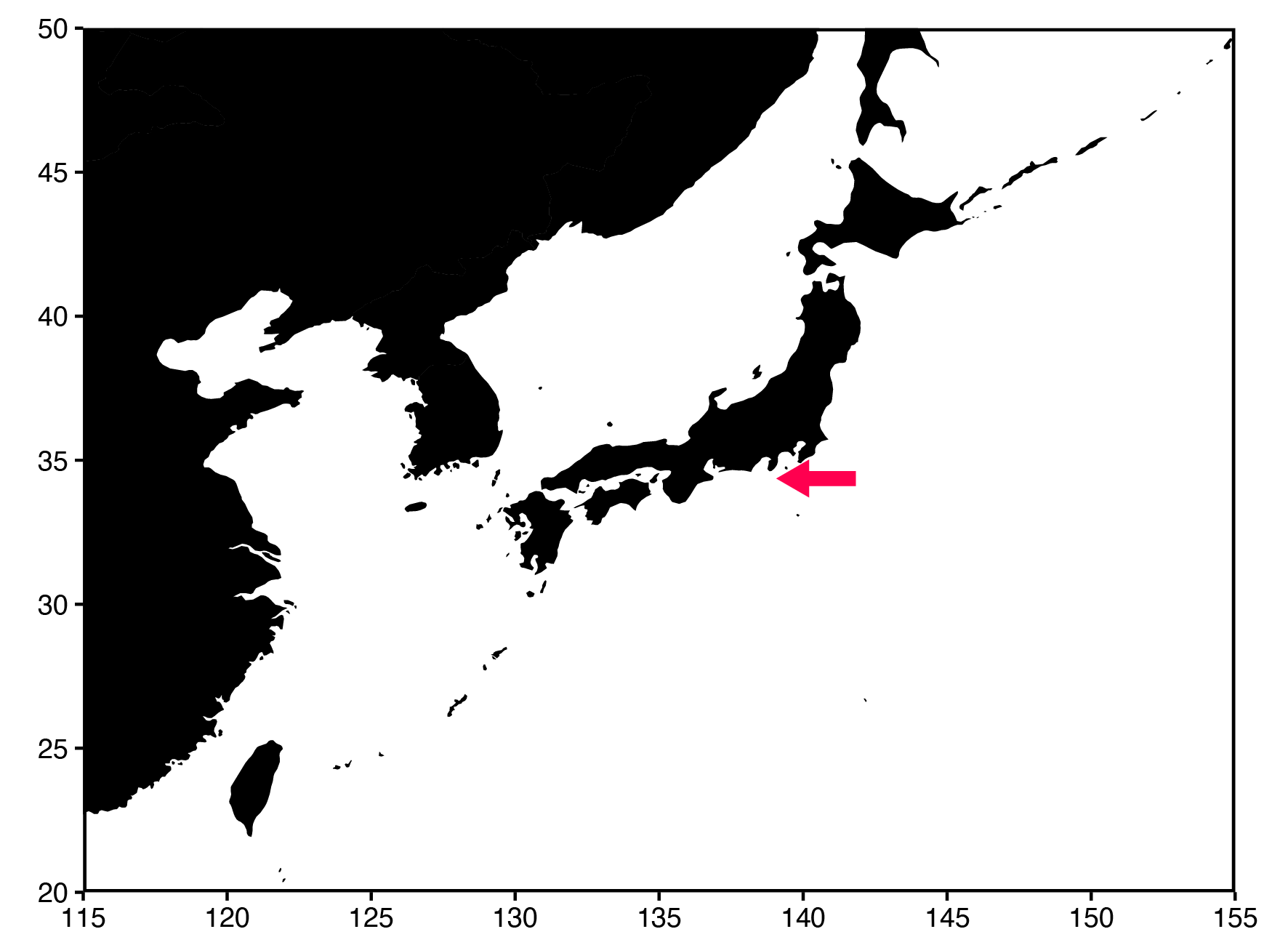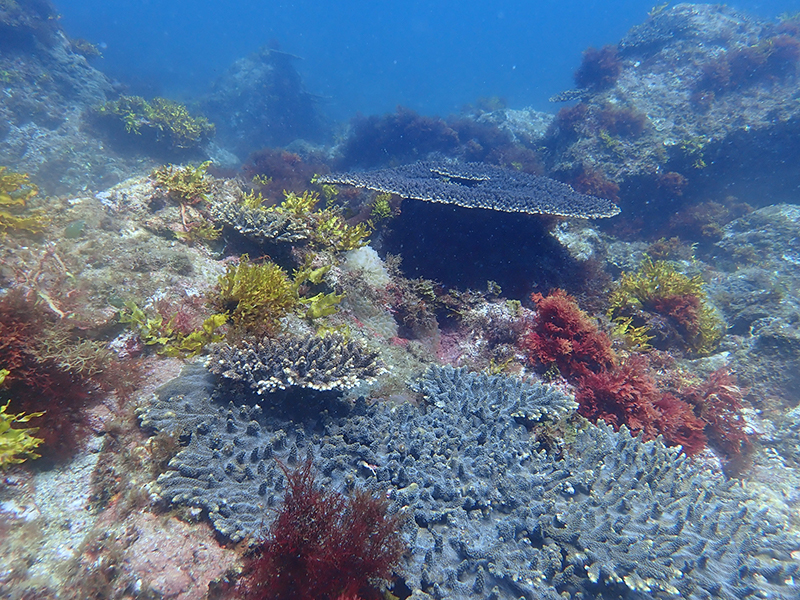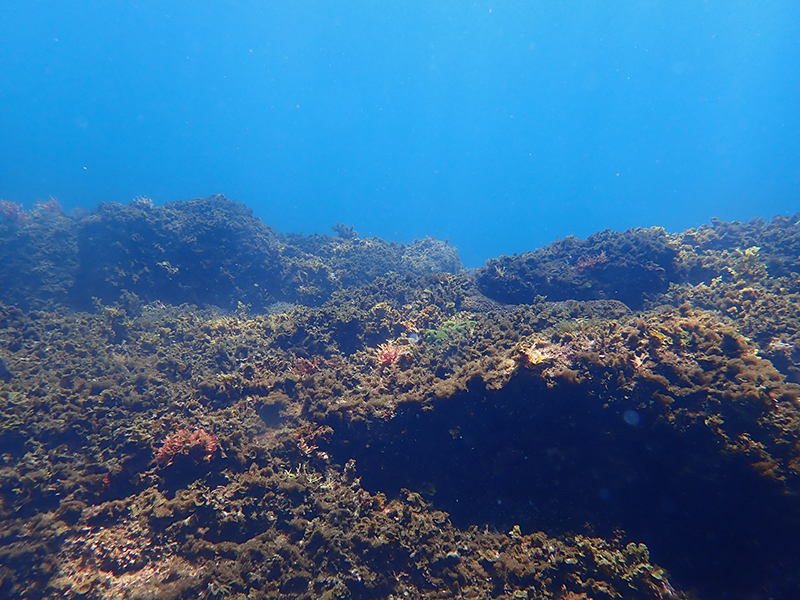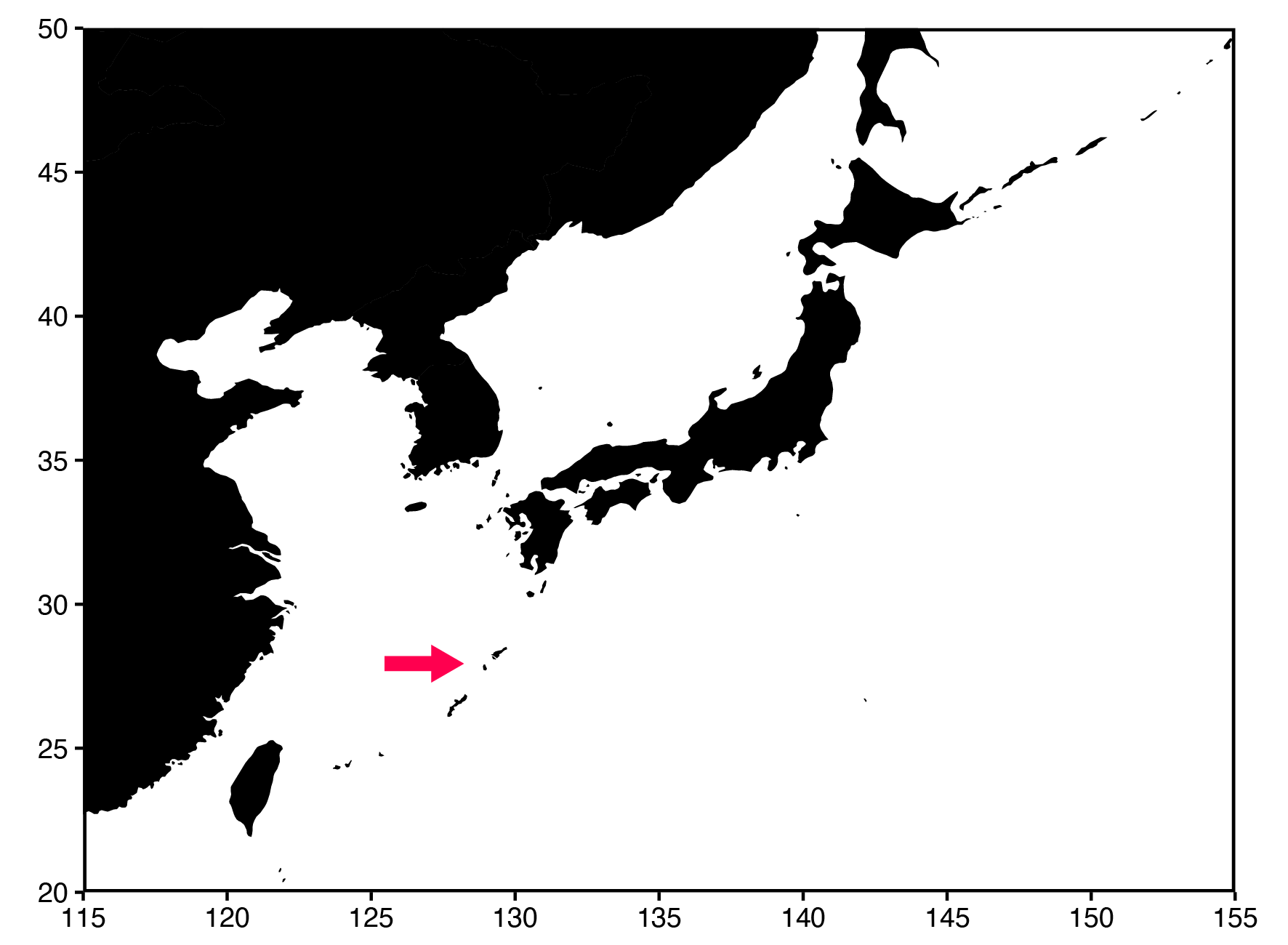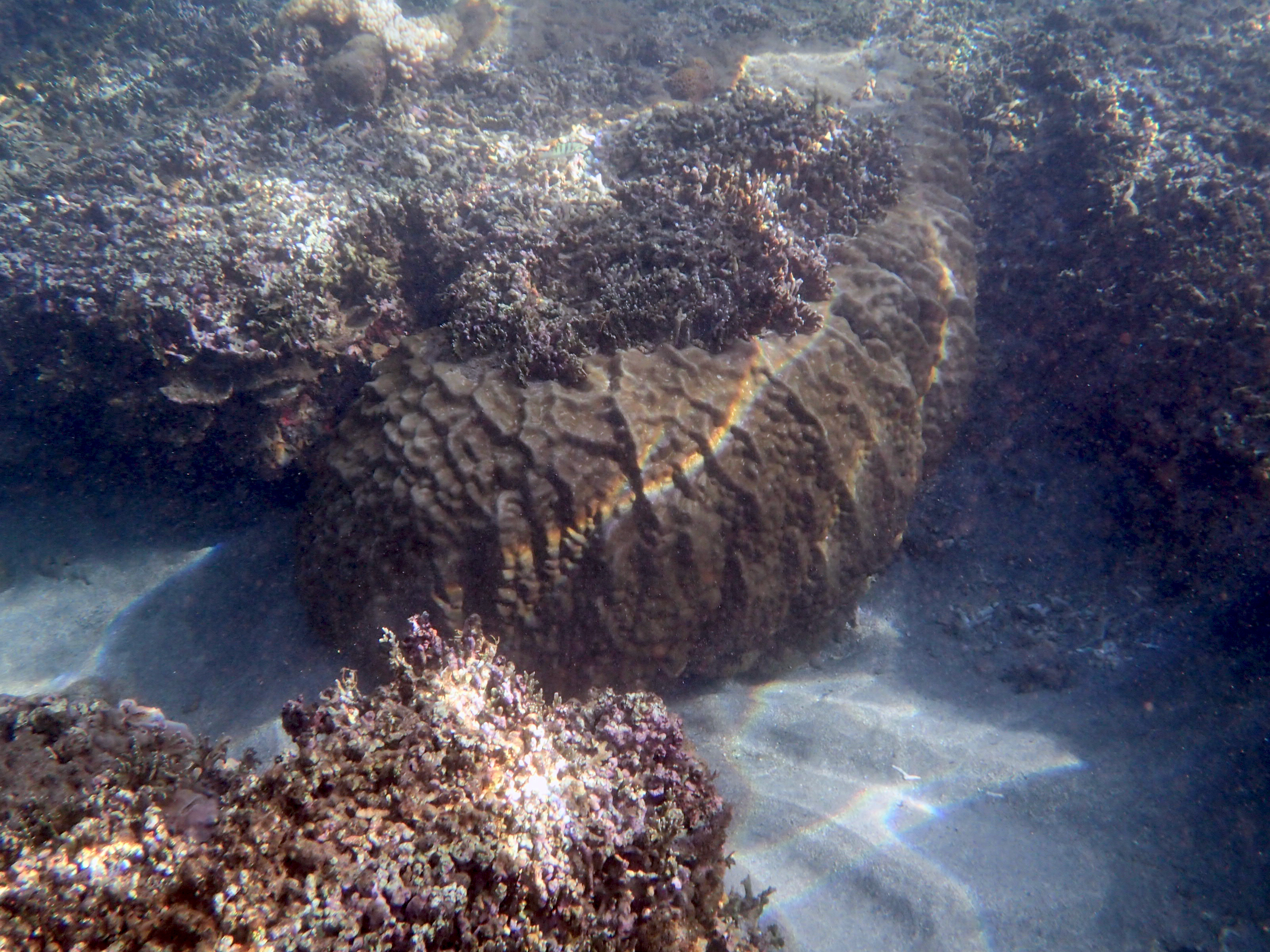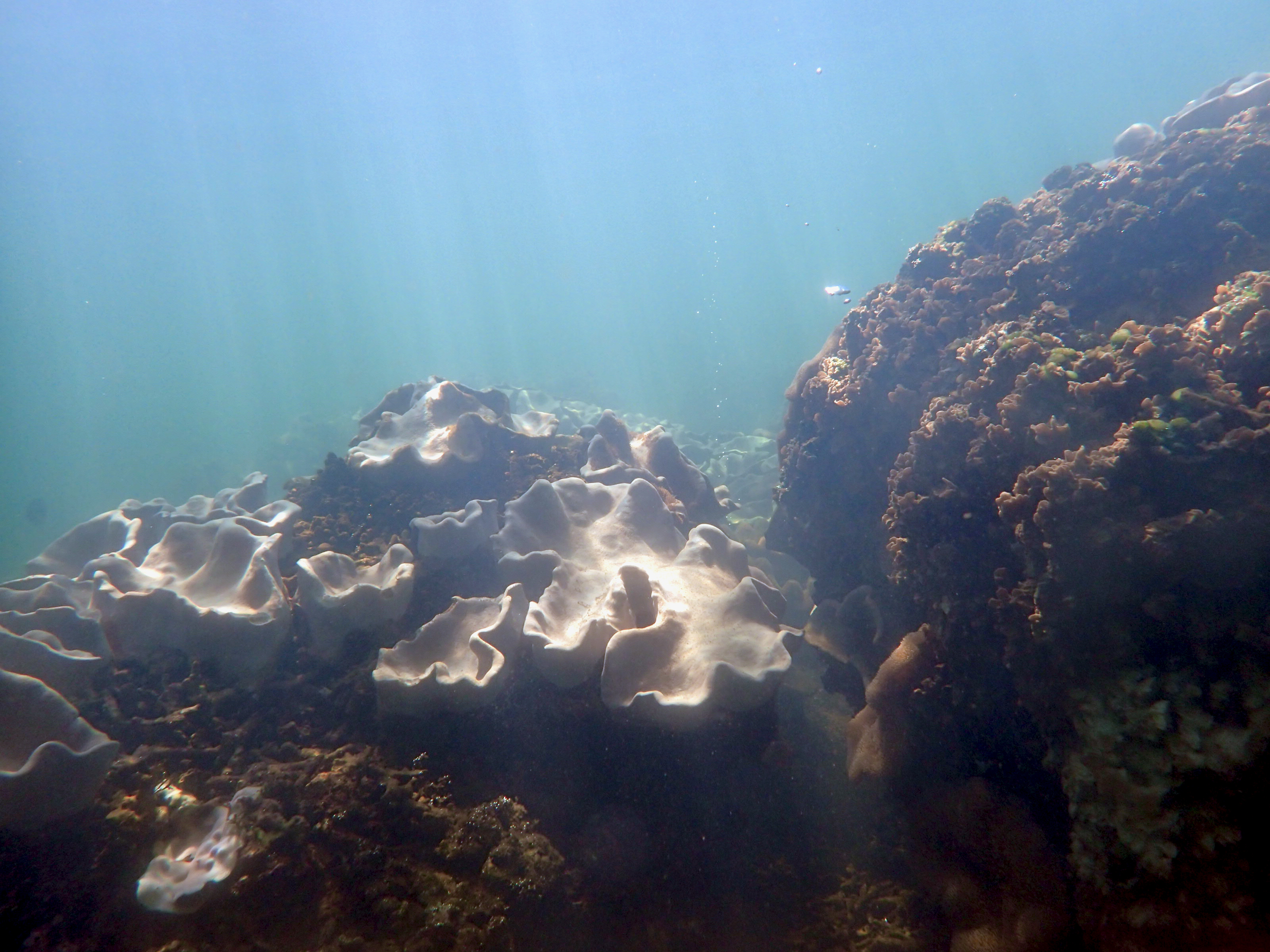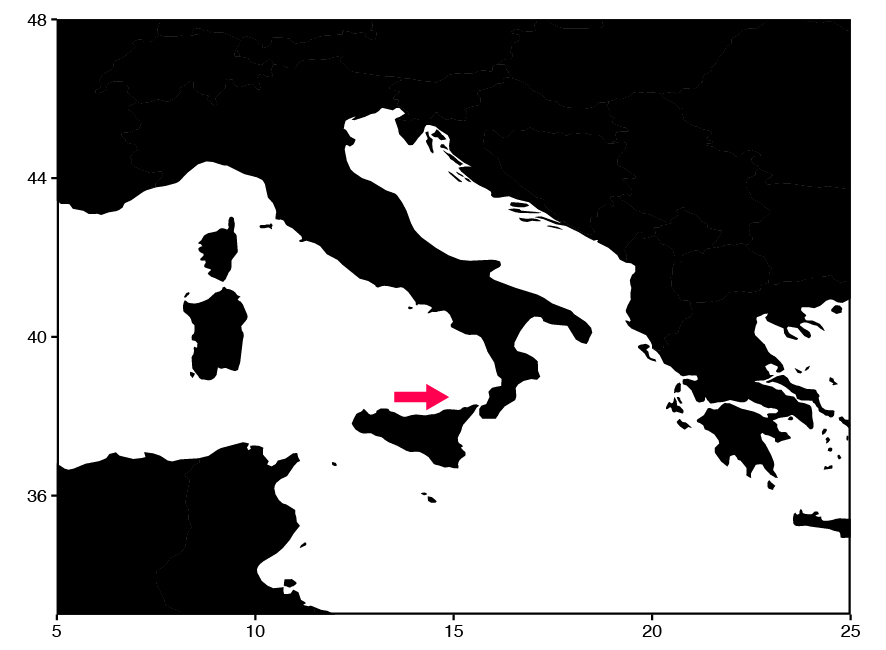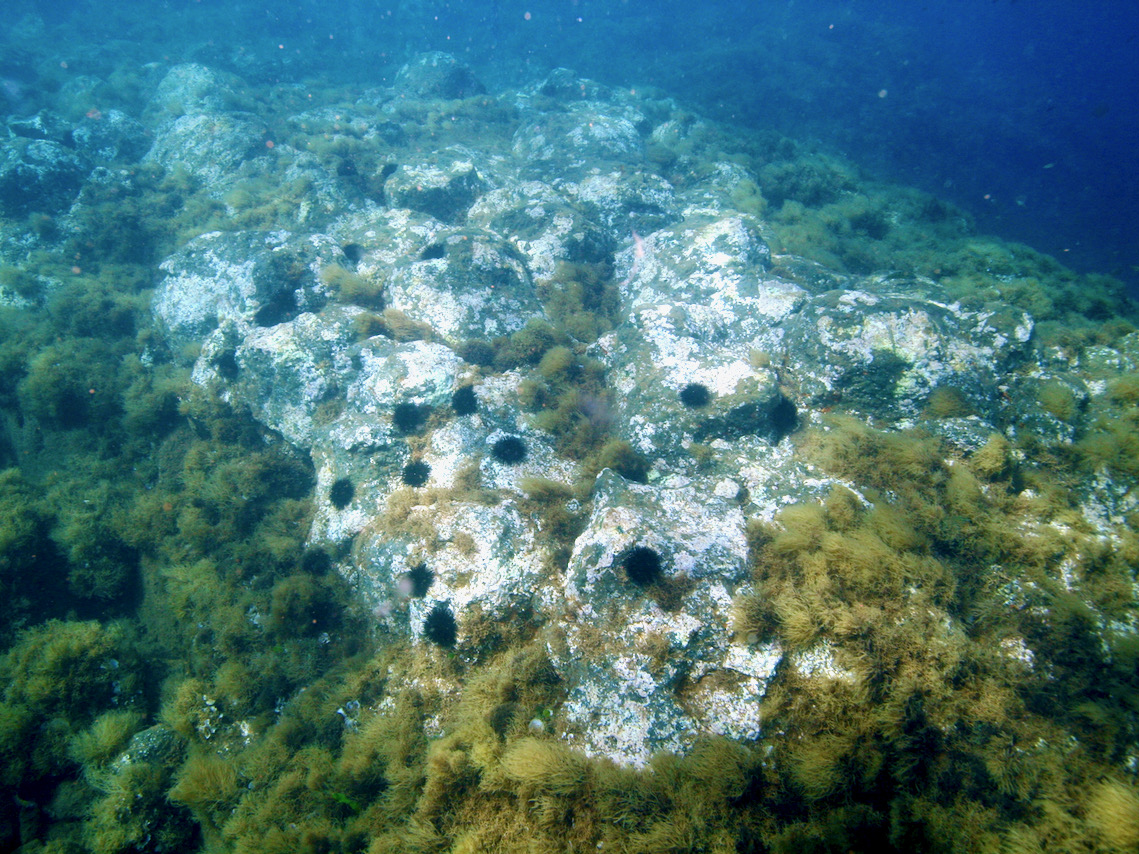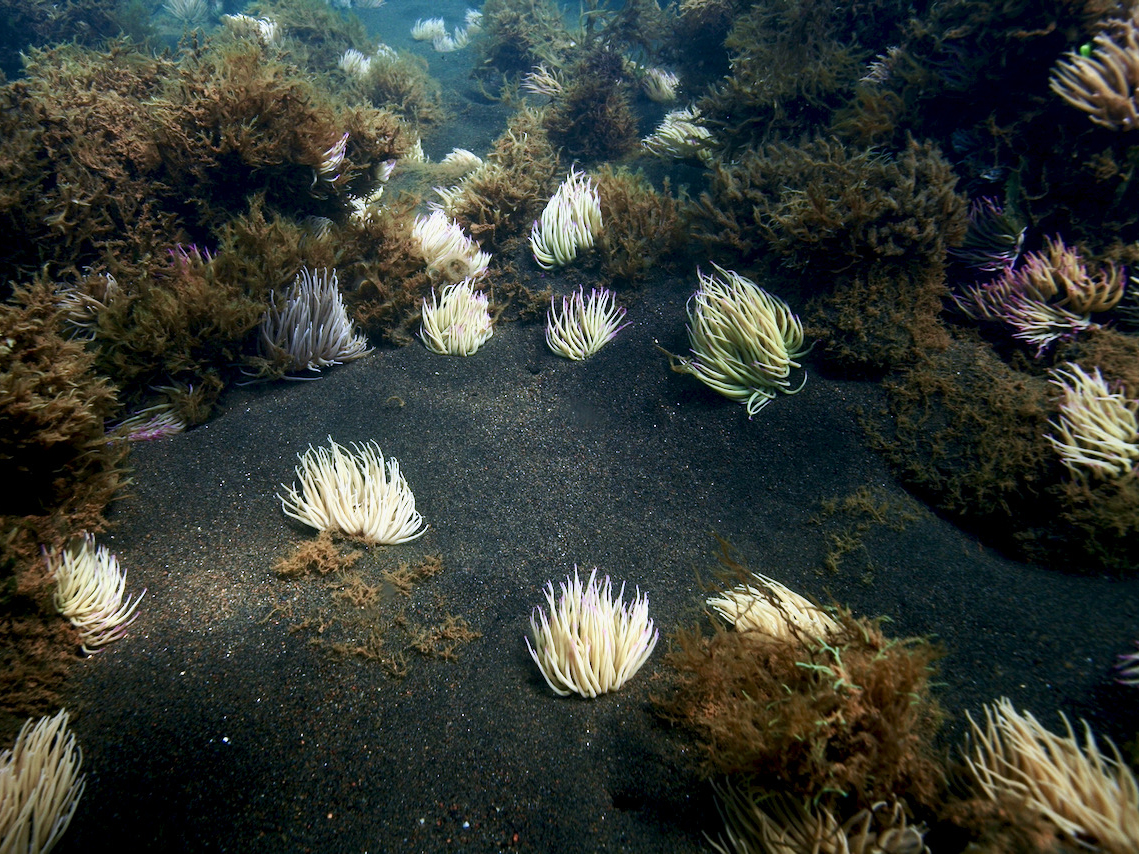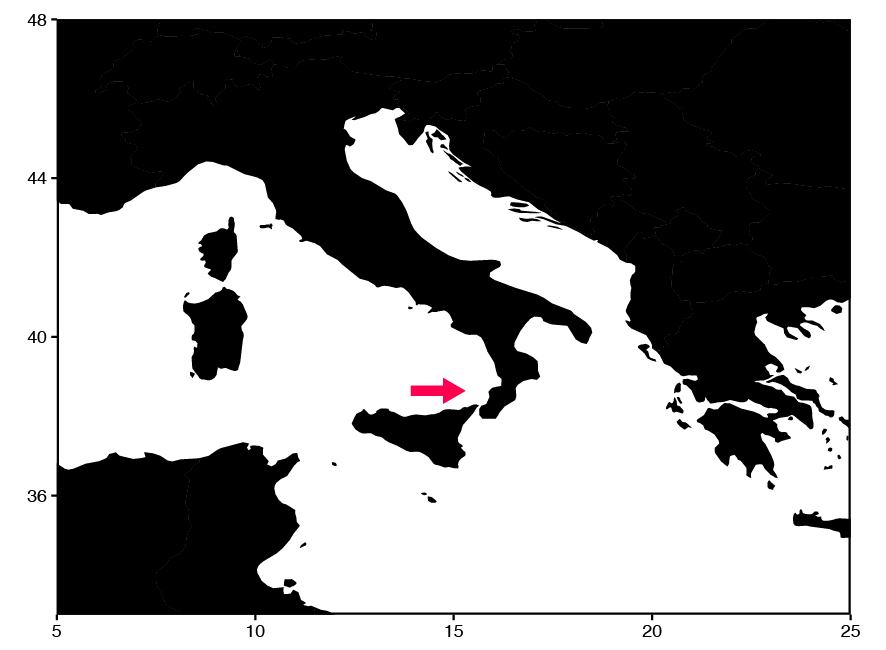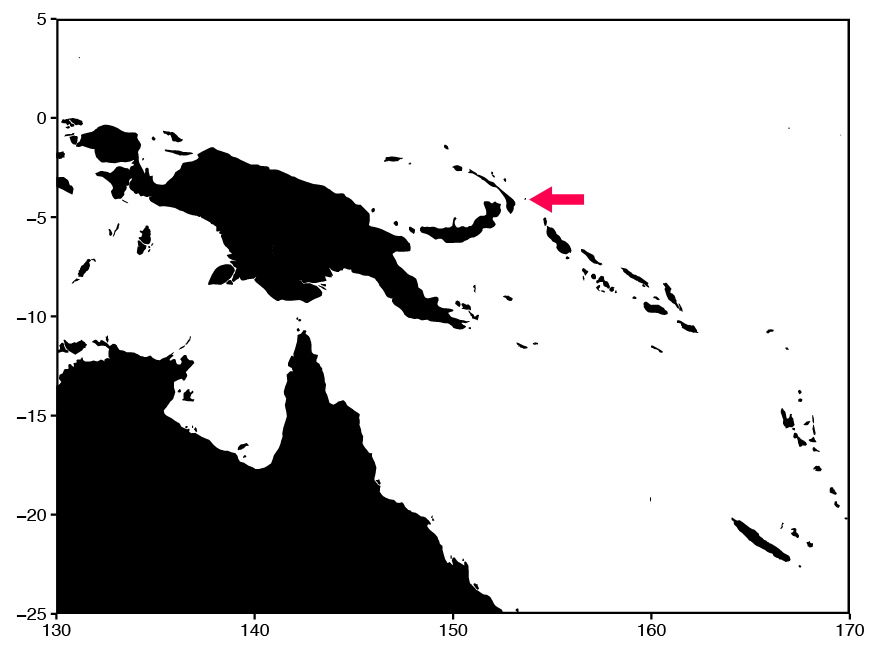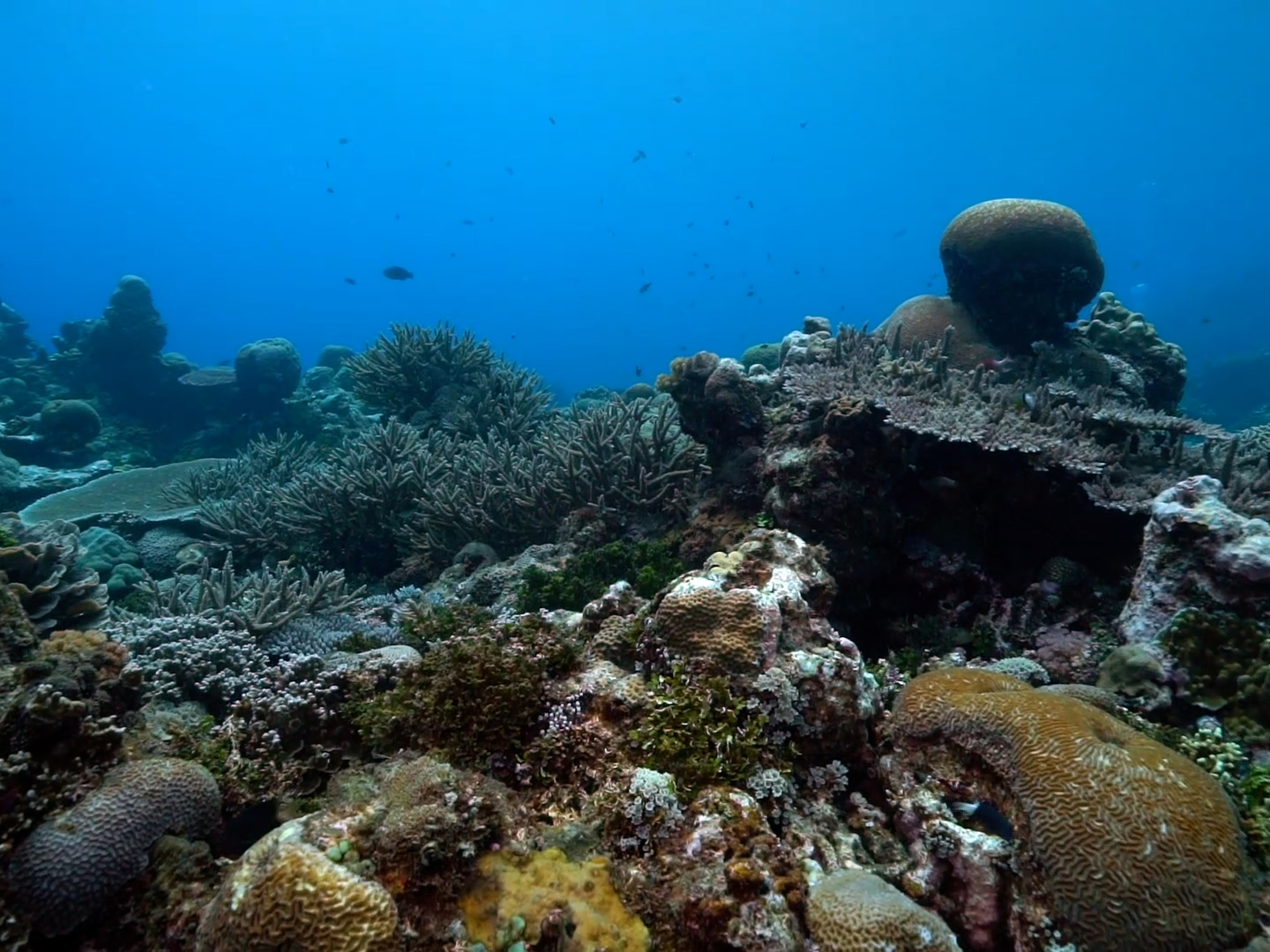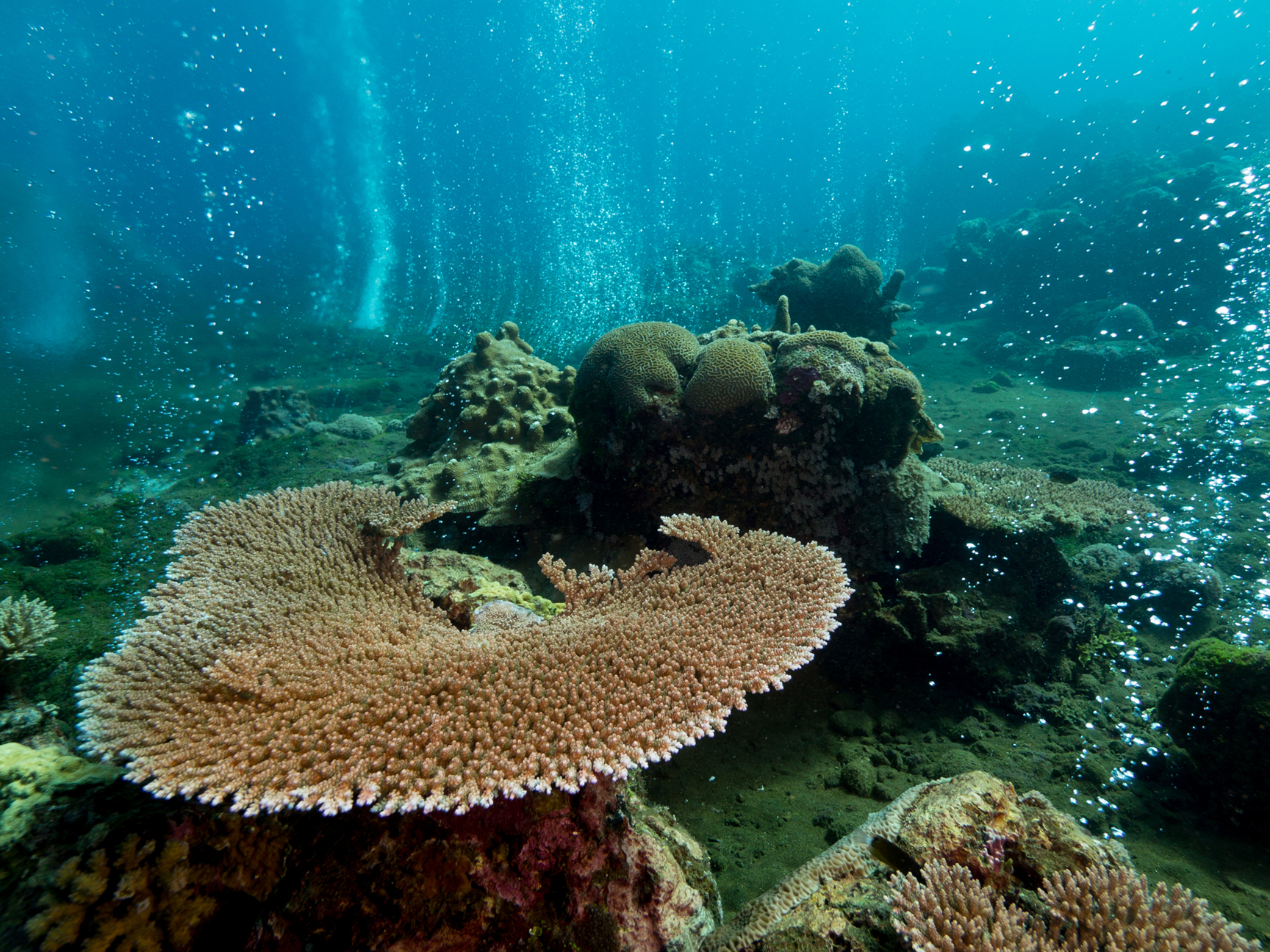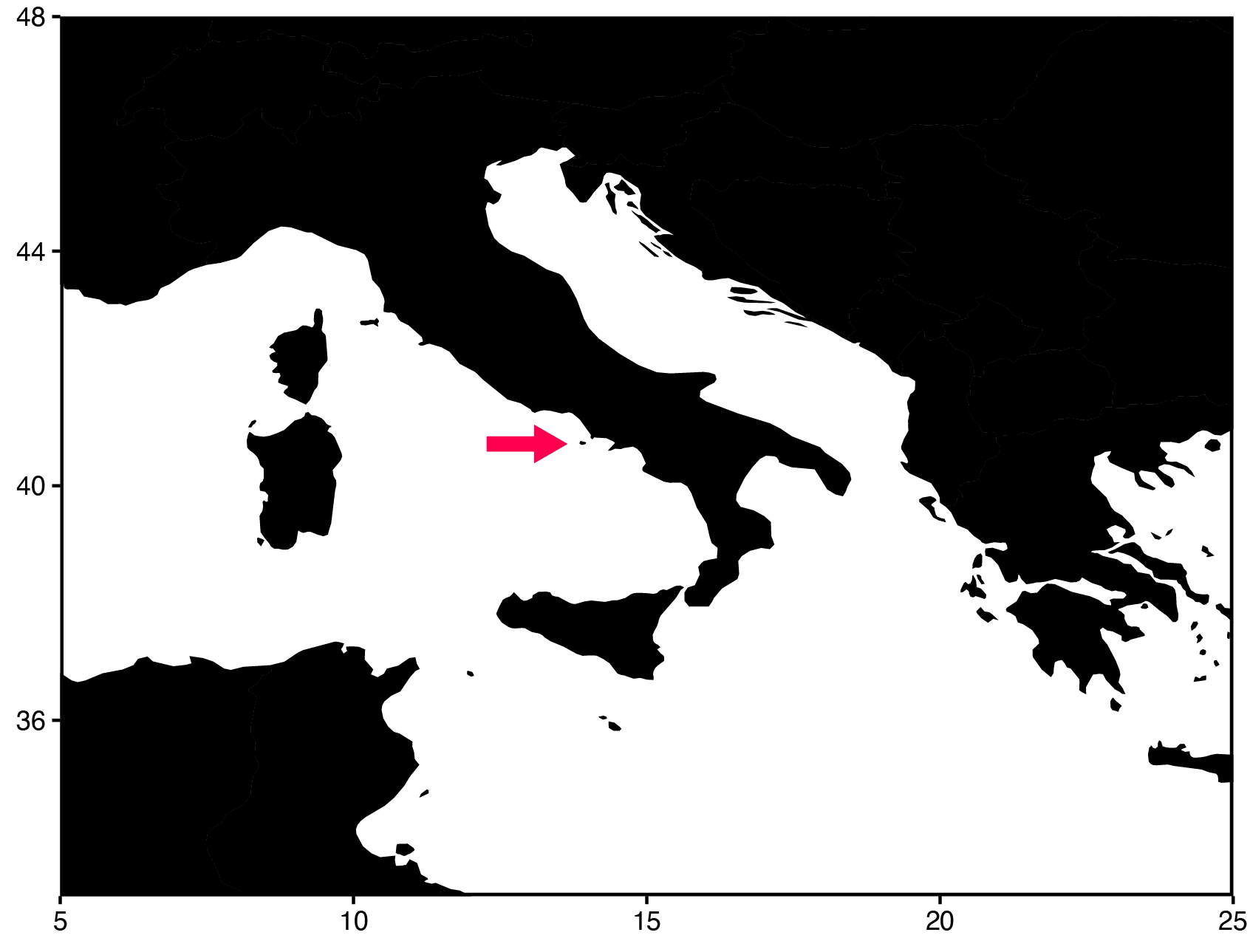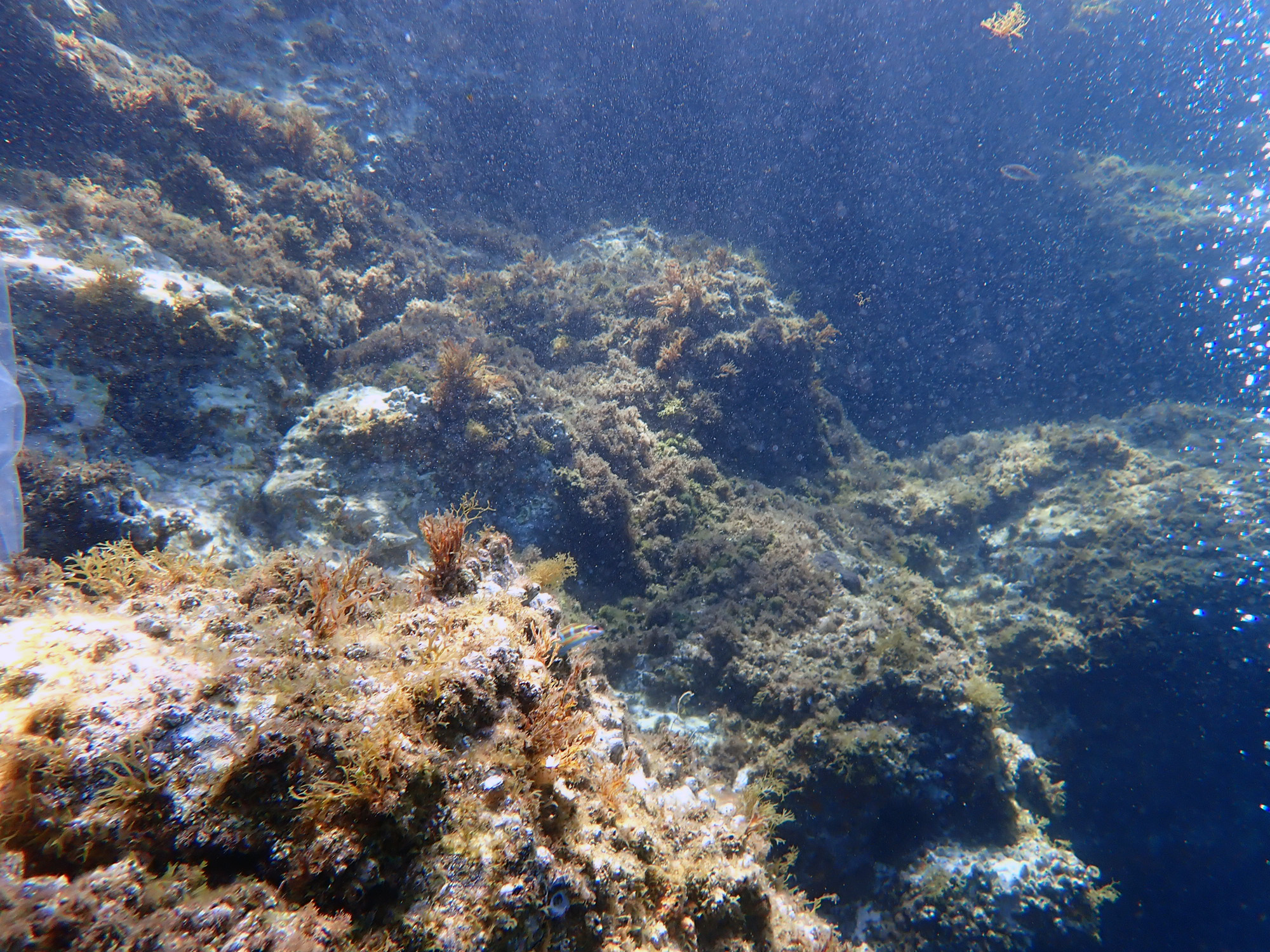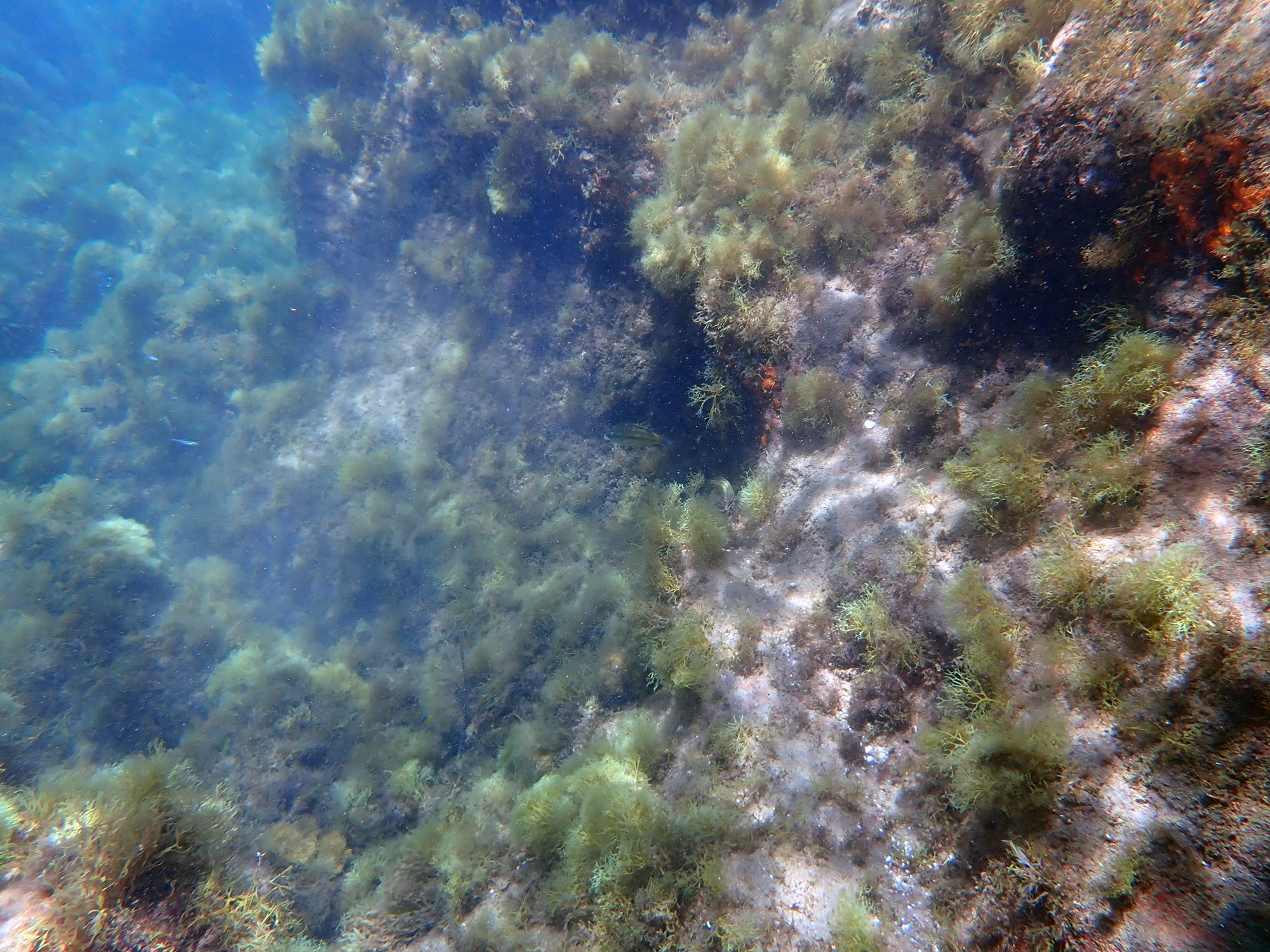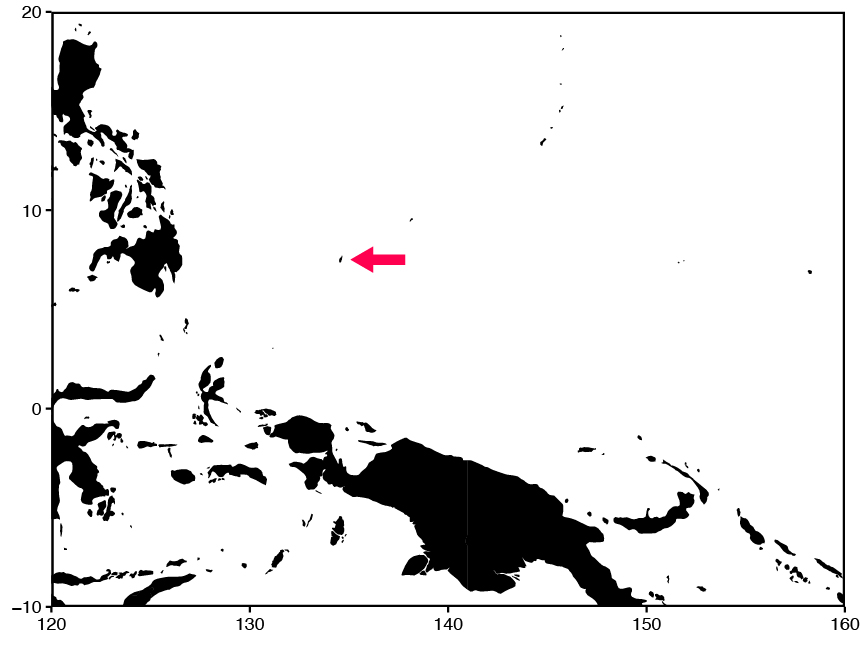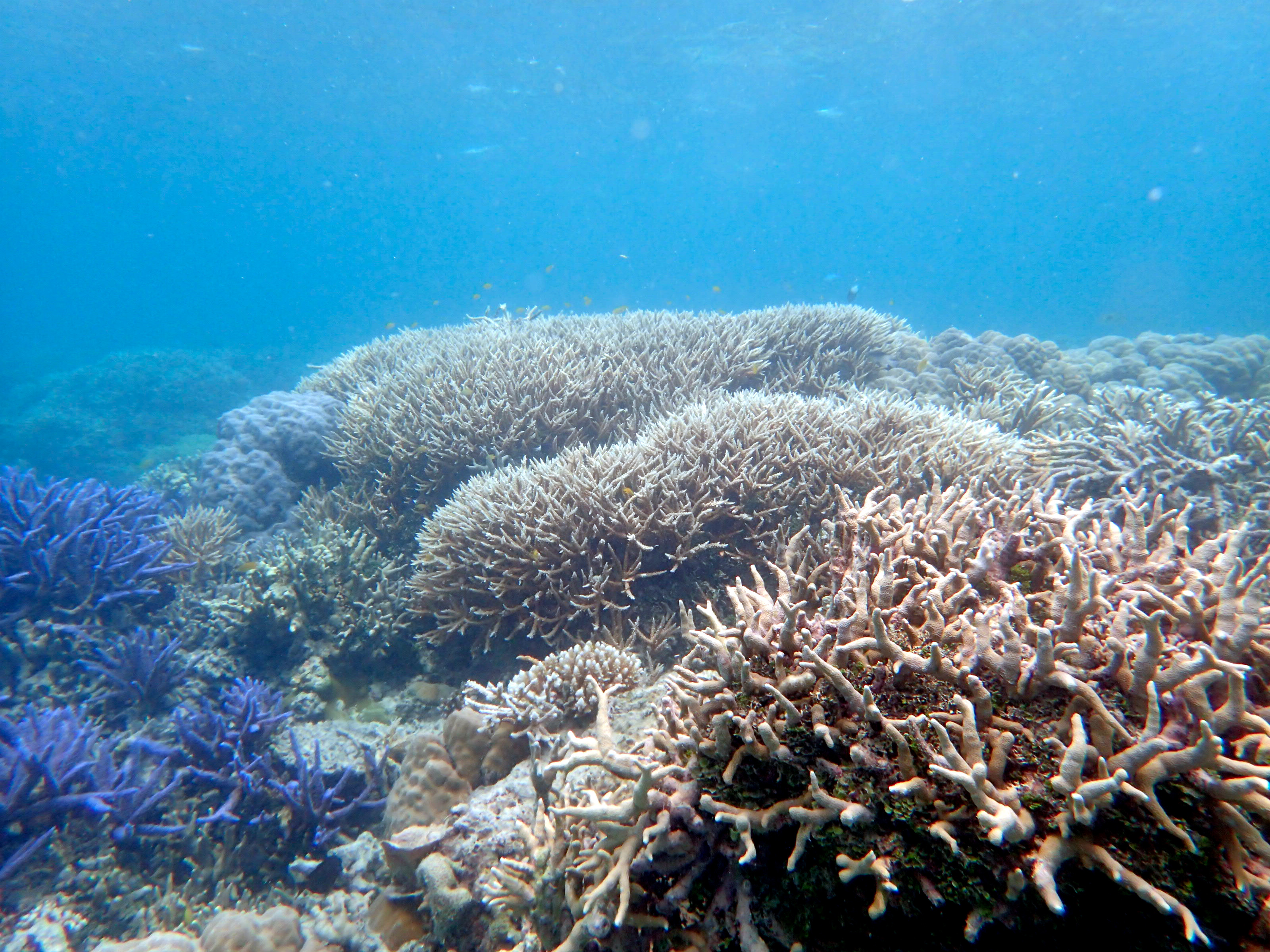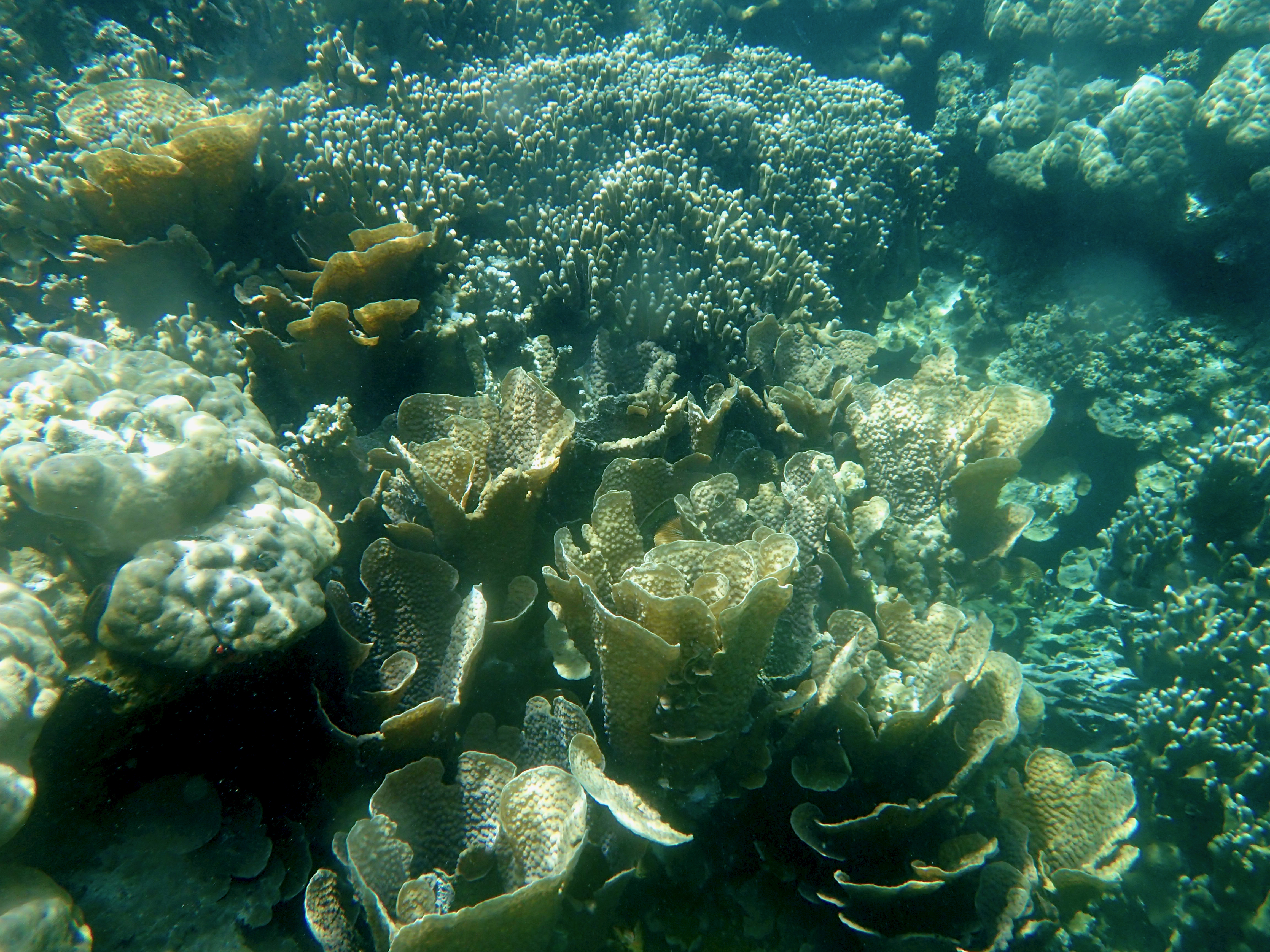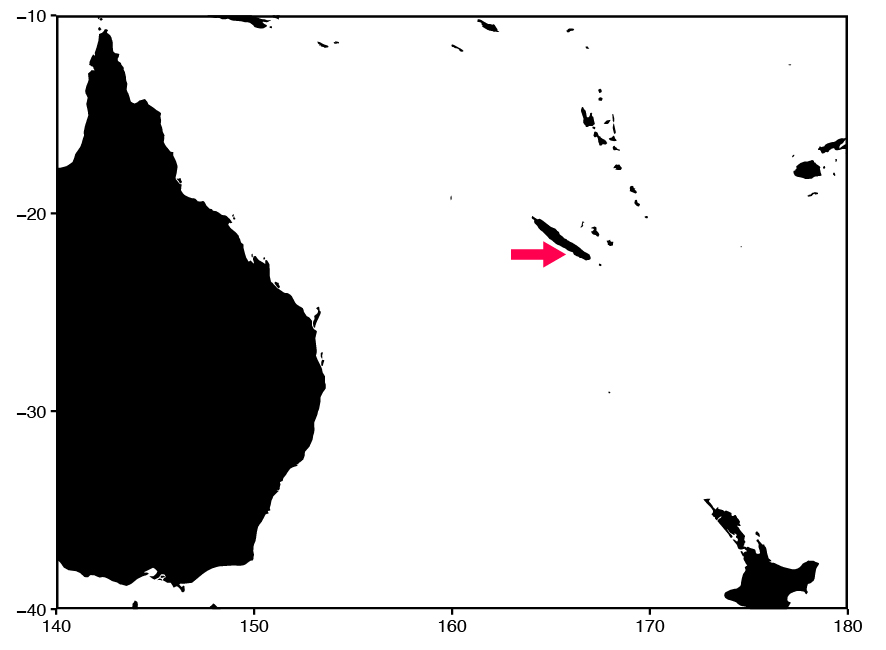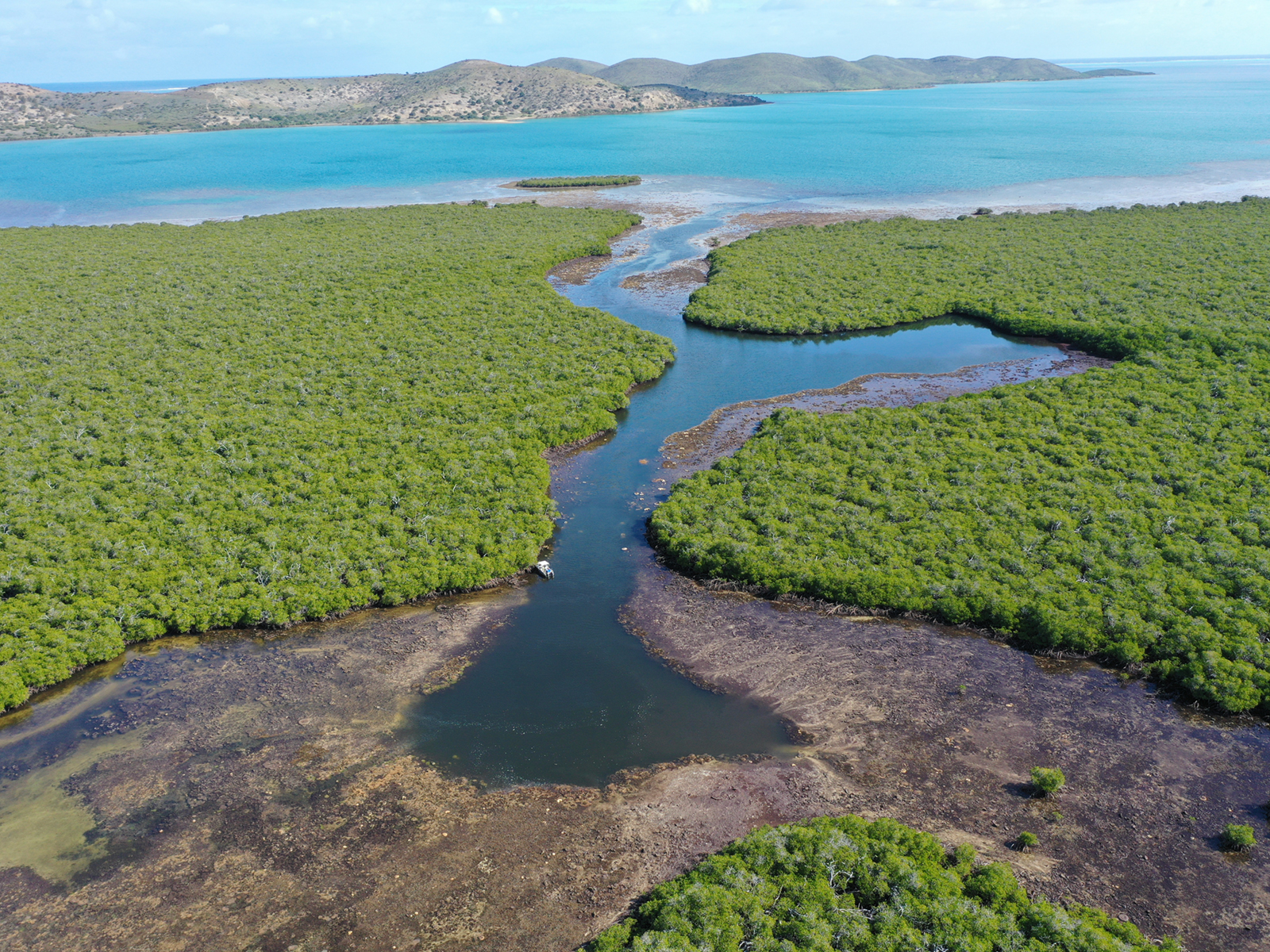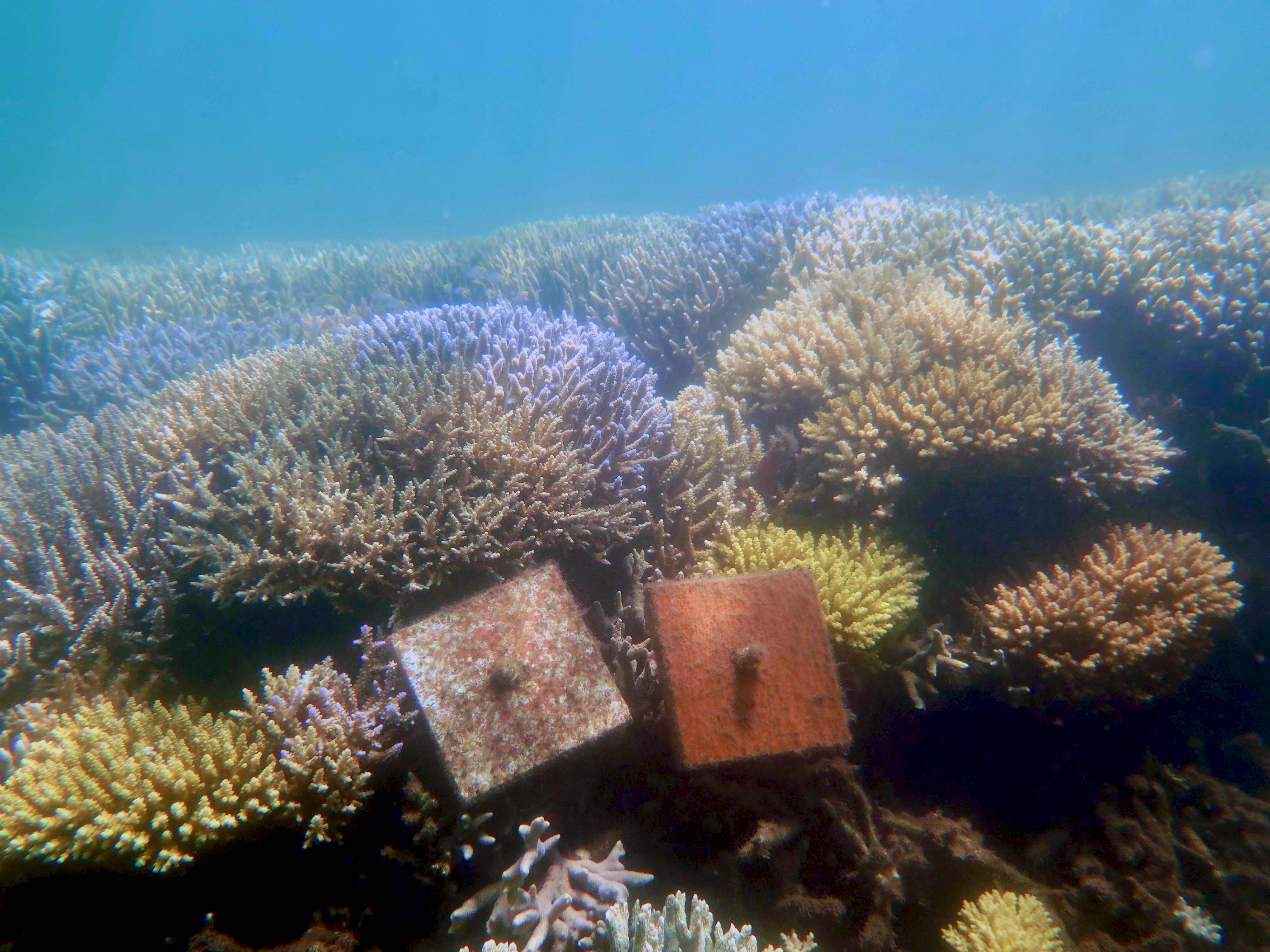Shikine Island CO2 Seep, Japan
Shikine Island is part of a group of offshore volcanic islands in Japan, termed the Izu Islands. The reference pCO2 site in Shikine Island includes a mix of corals and macroalgae. The coral are predominantly large tabular Acroporids, and sub-massive and encrusting corals (e.g. Favids and Porites). The macroalgae includes a diverse range of taxa, with abundant crustose coralline algae (e.g. Lithophyllum spp.), non-calcareous encrusting algae (e.g. Peyssonneliaceae spp.), and a range of abundant fleshy algae (e.g. Chondracanthus tenellus, Codium coactum, Gelidium elegans, and Sarcodia ceylanica). Compared to the reference pCO2 site, the elevated pCO2 locations in Shikine Island greatly differ in terms of their community composition, and are predominantly characterised by extensive expanses of turf algae that dominate the community at the expense of the corals and larger macroalgae. This results in an ecosystem shift from complex calcified biogenic habitats towards less complex non-calcified habitats.
Shikine Island, Japan
Location
Shikine Island, Japan
Reference Site
Shikine Island, Japan
Elevated CO2 Site
Iwotorishima Island CO2 Seep, Japan
Iwotorishima Island is part of the Ryukyu Archipelago located in Southern Japan. It is a volcanic Island and CO2 leakage site that is located within a shallow coral reef lagoon. The CO2 site is fully covered by soft corals, and this seep site has provided evidence that OA can cause a shift in the coral community with the dominant species changing from hard corals to soft corals that lack hard calcium carbonate skeletons.
Iwotorishima Island, Japan
Location
Iwotorishima Island, Japan
Reference Site
Iwotorishima Island, Japan
Elevated CO2 Site
Vulcano Island CO2 Seep, Italy
Vulcano Island belongs to the Aeolian Archipelago located in the Southern Tyrrhenian Sea (NE Sicily, Italy). Most of the intense submersed seeps are located along the SW shore of Baia di Levante. These emissions create a shallow pH/CO2 gradient at ambient temperature extending >400 m from the most intense CO2 leakage site, and encompassing a great variety of temperate intertidal and subtidal habitats. Research in this seep site has provided evidence of OA impacts on different taxa living along the pH/CO2 gradient, causing impaired growth and reproduction, shifts in habitat-forming species and consequent reshuffling of species, as well as, imbalanced functions at community and ecosystem-level.
Vulcano Island, Italy
Location
Vulcano Island, Italy
Reference Site
Vulcano Island, Italy
Elevated CO2 Site
Panarea Island CO2 Seep, Italy
Panarea island is part of the Aeolian Archipelago located in the Southern Tyrrhenian Sea (NE Sicily, Italy). Its hydrothermal field is 4 km-2 large with more shallow CO2 emissions occurring close to the small islet of Bottaro just off Panarea at 10 m depth. These ‘cold’ emissions create a pH/CO2 gradient extending for a few tens of meters. The off-vent sites mostly host canopy-forming brown algae, calcifying red algae and seagrasses, whilst the vent site is dominated by low profile algae and turf forms. Abundance of corals and molluscs decreases approaching the main vent site, with these calcifying taxa disappearing at pH<7.8.
Panarea Island, Italy
Location
Panarea Island, Italy
Reference Site
Panarea Island, Italy
Elevated CO2 Site
Ambitle Island CO2 Seep, Papua New Guinea
Ambitle is a remote island located in the New Ireland Province, PNG. Submarine hydrothermal venting were found in Tutum Bay where a well-developed and diverse fringing coral reef live close to four main hot vents at around 8 m depth, and hundreds of both dispersed and diffuse seeps throughout all the bay. Gas composition of both seepages contained 93 to 98% CO2, with minor amounts of nitrogen (N2, 2 to 5 %), methane (CH4, < 2 %), oxygen, < 1 %), a trace of helium and, most importantly, no traces of sulfur compounds, such as H2S. In the framework of the project CARIOCA the site has been explored 4 times since 2016. It was found that the whole bay has a mean pH ranging from 7.6 to 7.7 and a temperature relatively close to the upper thermal limits for several scleractinian corals (>30ºC) but stable year round, making it a suitable site to study the effect of high pCO2 on coral reefs exposed to high temperatures. It was demonstrated that other trace elements such as arsenic, emitted by the vents at the study site were rapidly diluted or biologically fixed and are not available at the reef bottom level. The reference site is located 1 km from the bay and had normal seawater pH (8.0 pHT unit) and chemical composition characteristic of the region. Although the low pH, the team found 140 coral species, similar in composition to the reference site.
Ambitle Island, Papua New Guinea
Location
Ambitle Island, Papua New Guinea
Reference Site
Ambitle Island, Papua New Guinea
Elevated CO2 Site
Ischia CO2 Seep, Italy
Text to follow
Ischia, Italy
Reference Site
Ischia, Italy
Elevated CO2 Site
Nikko Semi-Enclosed Bay, Palau
Nikko Bay is a semi-enclosed bay located in Palau. This bay has warmer temperatures of 1-2 ℃ and lower pH (pH 7.6-7.8) which are caused by the long residence time and driven by the biological processes of the organisms living with the bay (such as metabolism including respiration/photosynthesis and calcification). Despite this, the bay shows highly diverse corals that exhibit high coverage. This bay therefore gives the unique opportunity to study the potential of organisms to adapt and evolve under different environmental conditions.
Nikko Bay, Palau
Location
Nikko Bay, Palau
Outside of the Bay
Nikko Bay, Palau
Within the Bay
Bouraké Enclosed Bay, New Caledonia
Bouraké is a semi-enclosed coral reef lagoon surrounded by a dense mangrove forest and located in New Caledonia (southwestern Pacific Ocean, South Province, Grande Terre). In Bouraké, a channel of more than 80 m wide and 0.5 to 6 m deep penetrates and expands into side pools and a large reservoir in the inner part of the mangrove system. The site has been monitored from 2016 and measurement revealed that most physical and chemical parameters are regulated by the tide, strongly fluctuate 3 to 4 times a day, and are entirely predictable. The seawater pH and dissolved oxygen decrease during falling tide and reach extreme low values at low tide (7.2 pHT and 1.9 mg O2 L-1 at Bouraké, vs 7.9 pHT and 5.5 mg O2 L-1 at reference reefs). Dissolved oxygen, temperature, and pH fluctuates according to the tide of up to 4.91 mg O2 L-1, 6.50 °C, and 0.69 pHT units on a single day. Surprisingly, despite extreme environmental conditions and altered seawater chemical composition measured at Bouraké, our results reveal a diverse and high cover community of macroalgae, sponges and corals accounting for 28, 11 and 66 species, respectively.
Bouraké Bay, New Caledonia
Location
Bouraké Bay, New Caledonia
Study Area
Bouraké Bay, New Caledonia
Study Site
